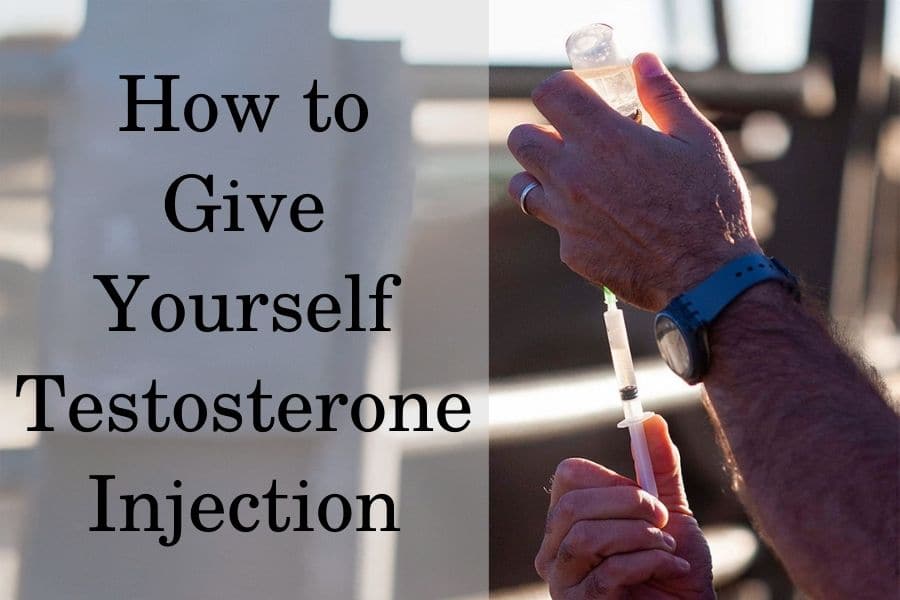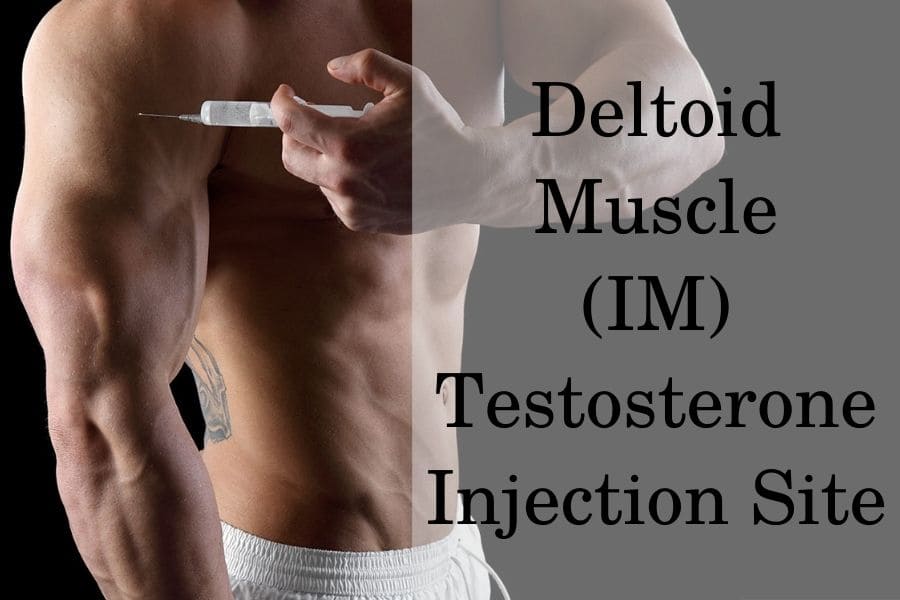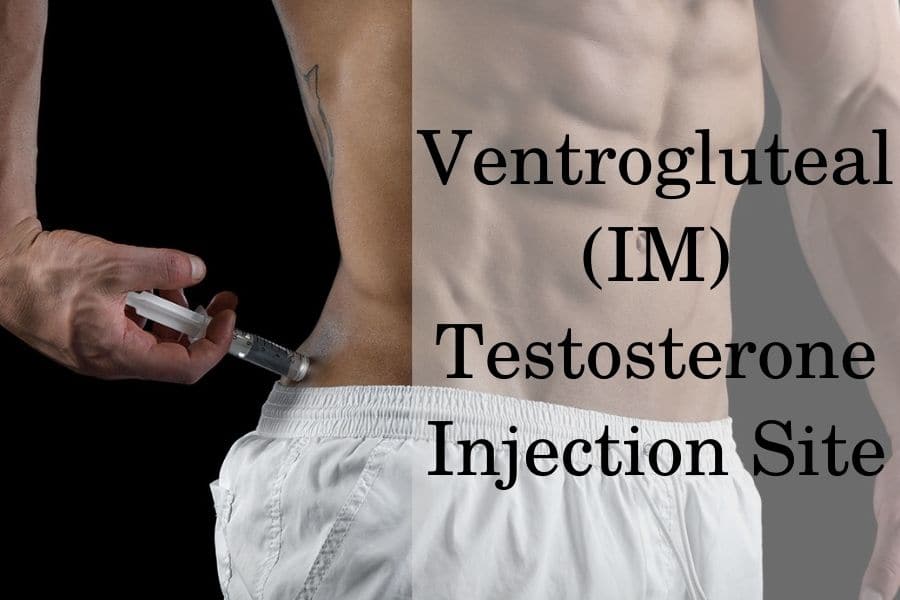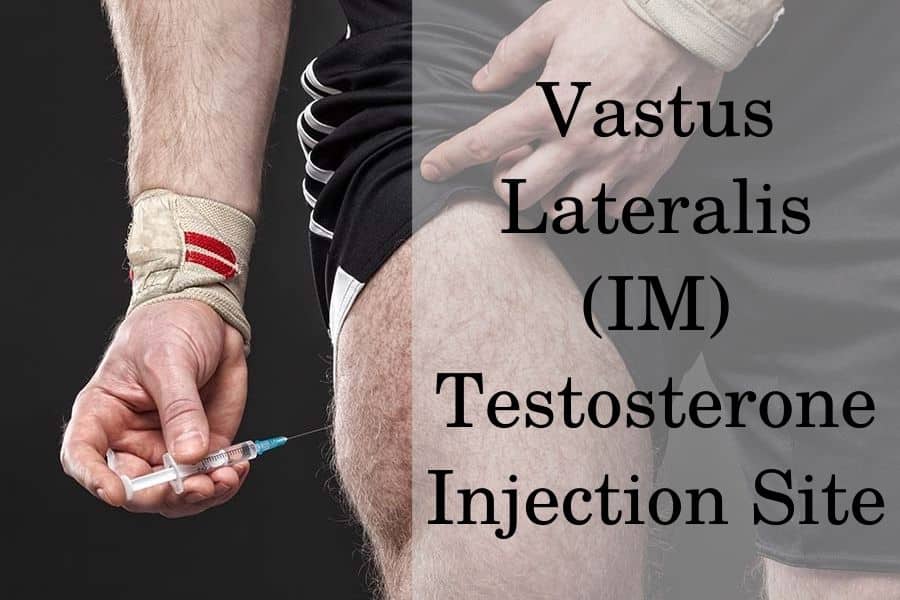If you have hypogonadism, your endocrinologist may prescribe testosterone injections. Testosterone replacement therapy (TRT) is proven as one of the most effective methods to manage the symptoms of low T.
There’s an option to get the injections in the doctor’s office, so you won’t have to worry about self-injecting. You will have to visit every 1-12 weeks depending on your dosage and medication.
However, many patients prefer testosterone injections as they are the most affordable form of TRT that can be used at home. If that is also your case, then in this guide you can find valuable information and step-by-step instructions on how to inject T effectively and safely.
In general, self-injecting testosterone is a relatively simple procedure, regularly performed by millions of patients worldwide. However, if you notice something unusual or feel unwell after self-administration, then contact a doctor immediately.
Best testosterone injection sites
Testosterone can be injected either deep inside a muscle (intramuscular), or under the skin (subcutaneous). The intramuscular (IM) route is the most common method of administering TRT because the hormone is absorbed much faster.
Studies report that intramuscular injections cause a peak in body T levels after 3 days compared to 8 days when applying the hormone subcutaneously (SQ).
Thus, IM injections can provide faster results in the treatment of hypogonadism. There isn’t any statistical difference in the peak testosterone concentration or the duration of the effect compared to the subcutaneous injections.
With intramuscular injections, you can apply significantly larger volumes of medication compared to SQ administration.
Testosterone can be injected IM into the shoulder (deltoid muscle), thigh (vastus lateralis), or buttocks (gluteus maximus or gluteus medius).
The gluteus medius (ventrogluteal site) is the best place to perform intramuscular injections in terms of safety. There are no major blood vessels or nerves in this area which minimizes the risk for accidents.
Ventrogluteal injections are also more convenient for self-administration than dorsogluteal or shoulder injections. However, the most easily accessible and comfortable site for self-injection is in the middle outer area of the thigh muscle.
In the case of subcutaneous self-administration, testosterone can be injected into the area of your abdomen or thighs.
What equipment is required for injections?
Here is a list of the supplies you will need for performing an intramuscular injection:
- Vial with testosterone
- Sterile syringe (5ml)
- Sterile needle for withdrawal
- Sterile needle for IM injections
- Alcohol wipes/swabs
- Sterile pad or gauze and a bandage
- Container for sharp materials
The best size of the needles for intramuscular injections is 1-1.5 inches (2.5 – 4 cm). Their width is measured in Gauges (G) and the standard is 22-23G.
Depending on the exact type of testosterone injection prescribed for your treatment, it is safe to inject a maximum of 400mg every 4 weeks or 750mg every 10 weeks.
The period between the first couple of injections might be shorter to provide faster symptom relief for patients with hypogonadism.
However, exceeding the maximum recommended dosage in the long term can increase the risk of side effects.
How to give yourself a testosterone injection
The testosterone esters used for the treatment of hypogonadism include:
- Testosterone Cypionate
- Testosterone Enanthate
- Testosterone Undecanoate
All of these forms are available as intramuscular injections that can be administered with a sterile needle and syringe and follow the same route of administration. You must apply the medication deep inside a muscle by inserting the whole needle perpendicularly into the tissues.
When self-injecting, it is best to pick the middle thigh area or ventrogluteal area as your injection site. This will increase comfort and reduce the difficulty of the procedure.
With some practice and help from your medical doctor, you will learn how to quickly select the best place to give yourself a testosterone shot safely and pain-free.
Here are simple rules on how to self-inject testosterone:
Wash your hands. Before gathering the supplies for the injection make sure to disinfect your hands. This will minimize the risk of getting an infection due to contaminated injection tools.
Inspect the vial and prepare it. Make sure that there is no discoloration or particulate matter in the medication. Remove the plastic cap from the top of the vial without removing the metal ring around the rubber stopper. Disinfect the stopper with an alcohol swab.
Withdraw testosterone from the vial. Put a sterile needle on a sterile syringe and draw in some air. Inject air into the vial to facilitate the withdrawal process. Then keep the needle in and turn the vial with the syringe upside down. Pull back on the plunger to withdraw the correct amount of testosterone.
Discard the vial if it’s single-use after you have pulled out the needle
Prepare the syringe. Make sure to expel any excess air or large air bubbles from the syringe. Discard the needle in the container for sharp materials and replace it with a new one for IM injections.
Locate and disinfect the injection site. Wipe the spot with an alcohol wipe to reduce the risk for an infection in the injection site. Let the skin air dry before the injection. Make sure to take a position in which the muscle is relaxed.
Don’t inject in the site if there is an infection, irritation, redness, or another problem affecting that skin area
Insert the needle into the injection site. You should hold the syringe like a dart and insert the needle perpendicularly to the skin (at a 90° angle). Insert it deeply into the muscle with one swift motion to avoid any pain. Stabilize the needle with one hand and pull back on the plunger to check if there is blood.
Inject the medication. Start by slowly pressing the plunger while holding the syringe stable. Once you have injected everything pull the needle out and discard it together with the syringe in the container for sharp materials. Upon removal, apply pressure on the injection site with a sterile pad and put on a bandage to reduce bleeding.
What is the best time to inject testosterone?
When taking injectable TRT, it doesn’t matter what time of the day you inject yourself. You may choose to inject in the morning, at noon, or right before bed depending on your personal preference.
That’s because injections are taken once per week or once every few weeks and the goal is to achieve stable hormonal levels over long periods of time.
For example, testosterone enanthate and cypionate must be applied every 1-4 weeks, while testosterone undecanoate is long-acting and should be applied every 10-12 weeks.
Testosterone enanthate has the fastest absorption according to evidence. It leads to an increase in serum T levels immediately after the shot.
However, studies report that it will take at least 3 weeks of continuous TRT to notice the first results. Furthermore, it takes several months to alleviate most of the symptoms of hypogonadism.
What to do after testosterone injection?
After taking injections for several weeks, you may expect multiple testosterone therapy results. Immediately after self-injection, you may experience local reactions.
Take care of your injection site by putting pressure on it to prevent bleeding. Furthermore, you may put on a bandage or massage it gently to relieve any discomfort.
In order to further reduce the risk of side effects at the injection site, make sure to switch between the left and right limbs when it’s time for your next dose.
What reactions can occur after testosterone injection?
Slight discomfort and transient bleeding are completely normal after injection. The risk of pain during administration depends mainly on your injection technique and subjective perception.
Similar to any other type of IM injection, there is a risk for complications after administering testosterone. Local symptoms which indicate a possible health problem include:
- Severe pain in the area
- Numbness, burning, or prickling sensations in the limb
- Redness, swelling, or lump formation
- Prolonged bleeding or any discharge from the injection site
If you have any of these signs, make sure to consult with a medical doctor. Long-term complications may include nerve injuries, muscle atrophy, infections, and abscesses.
Call your doctor immediately if there are signs of allergic reactions or thrombosis
Symptoms of an allergic reaction include itching, trouble breathing, difficulty swallowing, and swelling of the face or mouth.
Symptoms of a thrombotic event may include breathing problems, cough, tightening of your throat, headache, nausea, vomiting, trouble seeing or speaking, or chest pain that may spread to your arms, jaw, abdomen, back, or neck.
If you hit a nerve during an injection, you will feel an immediate burning pain. In some cases, this can result in numbness or paralysis of the limb.
Can there be bleeding after testosterone injection?
If you have hit a vessel during an IM injection, there will be blood when you pull back on the plunger before injecting the medication. In this case, you will have to discard the needle with the syringe and prepare a new dose.
If you inject testosterone into a blood vessel, the effects will depend on the amount of the substance and the size of the vessel. In mild cases, there is a transitory cough which usually goes away after several minutes.
Can testosterone injections cause POME?
However, there are case reports of pulmonary oil microembolism (POME) caused by testosterone injections. This is a life-threatening condition caused by injecting significant amounts of oily solutions into a large blood vessel and leads to acute respiratory distress syndrome.
Injecting small air bubbles into a muscle is not likely to cause any health problems as they get quickly resorbed. But a large amount of air can lead to gas embolism, similar to POME.
How to avoid pain and swelling after injection
There are 3 major steps that may help you completely minimize the pain during testosterone injections:
- Insert the needle quickly and without hesitation
- Once inserted, you should push the plunger slowly to inject the medication. A slower injection speed can reduce pain significantly during and after the procedure.
- Pull out the needle quickly by following the direction of the insertion (90° angle)
As you practice IM injections, you will feel more comfortable performing them on your own and reduce the risk of pain.
If you still experience anxiety after rereading through the steps multiple times, make sure to contact a medical specialist who can support you and guide you throughout the procedure.
Get a free consultation with our medical expert for any questions about hormone replacement therapy




